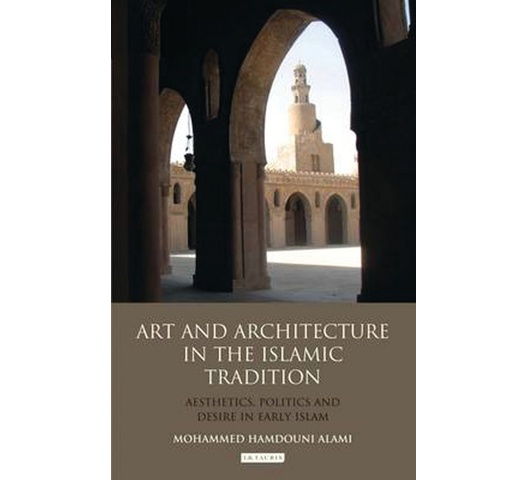
Art and Architecture in the Islamic Tradition
This is an eBook that you can download electronically.
What is 'art' in the sense of the Islamic tradition? Mohammed Hamdouni Alami argues that Islamic art has historically been excluded from Western notions of art; that the Western aesthetic tradition's preoccupation with the human body, and the ban on the representation of the human body in Islam, has meant that Islamic and Western art have been perceived as inherently at odds. However, the move away from this 'anthropomorphic aesthetic' in Western art movements, such as modern abstract and constructivist painting, have presented the opportunity for new ways of viewing and evaluating Islamic art and architecture. This book questions the very idea of art predicated on the anthropocentric bias of classical art, and the corollary 'exclusion' of Islamic art from the status of art.
It addresses a central question in post-classical aesthetic theory, in as much as the advent of modern abstract and constructivist painting have shown that art can be other than the representation of the human body; that art is not neutral aesthetic contemplation but it is fraught with power and violence; and that the presupposition of classical art was not a universal truth but the assumption of a specific cultural and historical set of practices and vocabularies. Based on close readings of classical Islamic literature, philosophy, poetry, medicine and theology, along with contemporary Western art theory, the author uncovers a specific Islamic theoretical vision of art and architecture based on poetic practice, politics, cosmology and desire. In particular it traces the effects of decoration and architectural planning on the human soul as well as the centrality of the gaze in this poetic view - in Arabic 'nazar'- while examining its surprising similarity to modern theories of the gaze.
Through this double gesture, moving critically between two traditions, the author brings Islamic thought and aesthetics back into the realm of visibility, addressing the lack of recognition in comparison with other historical periods and traditions. This is an important step toward a critical analysis of the contemporary debate around the revival of Islamic architectural identity - a debate intricately embedded within opposing Islamic political and social projects throughout the world.
SKU: 9780857718815
Format: PDF
It addresses a central question in post-classical aesthetic theory, in as much as the advent of modern abstract and constructivist painting have shown that art can be other than the representation of the human body; that art is not neutral aesthetic contemplation but it is fraught with power and violence; and that the presupposition of classical art was not a universal truth but the assumption of a specific cultural and historical set of practices and vocabularies. Based on close readings of classical Islamic literature, philosophy, poetry, medicine and theology, along with contemporary Western art theory, the author uncovers a specific Islamic theoretical vision of art and architecture based on poetic practice, politics, cosmology and desire. In particular it traces the effects of decoration and architectural planning on the human soul as well as the centrality of the gaze in this poetic view - in Arabic 'nazar'- while examining its surprising similarity to modern theories of the gaze.
Through this double gesture, moving critically between two traditions, the author brings Islamic thought and aesthetics back into the realm of visibility, addressing the lack of recognition in comparison with other historical periods and traditions. This is an important step toward a critical analysis of the contemporary debate around the revival of Islamic architectural identity - a debate intricately embedded within opposing Islamic political and social projects throughout the world.
KES 4,443

International delivery
Free click & collect
When you buy an ebook from TBC, you will be given a code to download your
purchase from our ebook partner Snapplify. After you have redeemed the code and
associated it with a Snapplify account, you'll need to download the Snapplify Reader
to read your ebooks. The free Snapplify Reader app works across iOS, Android,
Chrome OS, Windows and macOS; on tablets and mobile devices, as well as on
desktop PCs and Apple Macs.
You're currently browsing Text Book Centre's digital books site. To browse our range of physical books as well as a wide selection of stationery, art supplies, electronics and more, visit our main site at textbookcentre.com!
Reviews
This product does not have any reviews yet.
Add your review
